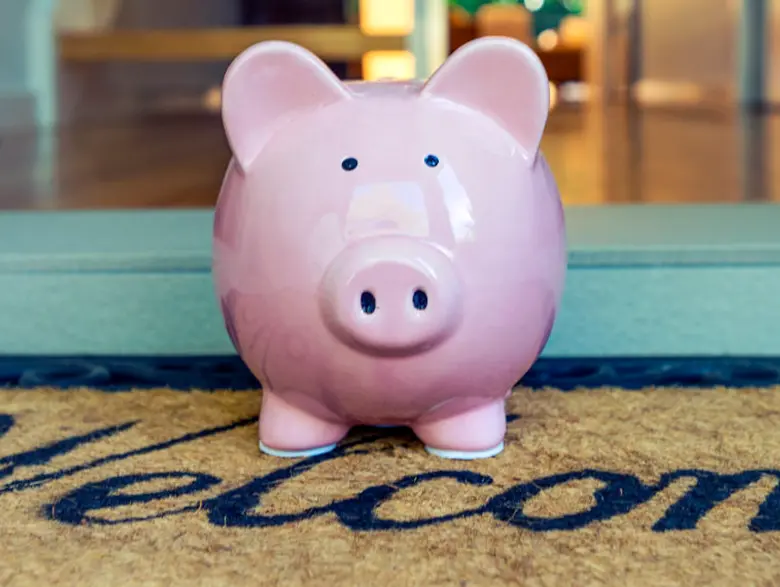A large down payment isn’t always needed to buy a home, but let’s take a look at how down payments can affect your total mortgage costs.
In this topic, you’ll learn:
- Why so many down payment myths persist.
- How a larger down payment can save you money.
- How to save a down payment.
When saving money for a house, here’s some advice that never goes out of style: start early and save often. Building a sizeable nest egg can make buying a home a much smoother experience, especially securing a mortgage with favorable terms.
Unfortunately, statistics show that many of us struggle with saving for such a long-term goal. Having a clearly defined objective certainly helps, and few goals are as motivating as owning your own home. So, let’s dive into the basics of saving for a down payment and dispel some common myths along the way.
Down Payment Myths
You’ve probably heard that you need a 20% down payment to buy a home. While a 20% down payment is ideal, the reality is quite different. Most people don’t put down that much when buying a home. In fact, the vast majority of homebuyers make down payments of 10% or less.
Why the 20% Myth Persists
The 20% figure is popular because it offers some definite advantages:
- Avoiding Private Mortgage Insurance (PMI) – When you put down at least 20%, you can usually skip PMI, which is an additional monthly cost designed to protect the lender in case you default on your loan. This can save you hundreds (or even thousands) of dollars a year.
- Lower Monthly Payments – A larger down payment means you’re borrowing less money, which results in lower monthly mortgage payments.
- More Attractive Loan Terms – Lenders view borrowers with a higher down payment as less risky, so you’re more likely to qualify for better interest rates and loan terms.
However, the idea that you must have 20% is simply not true. Most lenders are flexible and accept down payments as low as 5%, or even less in some cases. There are also several government-backed programs that make homeownership more accessible, even if you don’t have a large down payment saved up:
- FHA Loans – Ideal for first-time homebuyers, Federal Housing Administration (FHA) loans require as little as 3.5% down if you have a credit score of 580 or higher. This makes it easier for those with limited savings to get into their first home.
- VA Loans – If you’re a military veteran or an active service member, you may qualify for a VA loan through the Department of Veterans Affairs. These loans offer the possibility of buying a home with no down payment and come with competitive interest rates.
- USDA Loans – The U.S. Department of Agriculture offers loans for buyers in certain rural areas. If you qualify, you could secure a home with no down payment, making it a great option for those willing to live outside major metropolitan areas.
While these programs can significantly reduce your upfront costs, remember that the less you put down, the more you’ll borrow – and the more interest you’ll pay over the life of the loan.
The Benefits of a Larger Down Payment
Even though you’re not required to put down 20%, there are still plenty of reasons to aim for as much as you can afford:
- Shorter Loan Term Options – A larger down payment might allow you to opt for a shorter-term mortgage, such as a 15-year loan, which can save you thousands of dollars in interest.
- Immediate Home Equity – A bigger down payment means you start off with more equity in your home, giving you a financial cushion and greater flexibility if you need to tap into that equity down the road.
- Better Loan Approval Chances – Having more skin in the game makes you a less risky borrower, which can improve your chances of getting approved, especially if your credit score isn’t perfect.
How to Save for a Down Payment
Saving for a down payment might feel overwhelming, but breaking it down into manageable steps can make the process much more achievable. Here are some strategies to help you reach your goal:
Start Early and Save Consistently
It’s no secret that the earlier you start saving, the easier it is to build a substantial down payment fund. Setting up an automatic transfer from your checking to your savings account each month is a great way to make saving a habit. Treat it like any other bill – something you pay regularly, without fail.
Choose the Right Savings Vehicle
If your goal is four or five years away, stick to safer options like high-yield savings accounts or Certificates of Deposit (also known as Share Certificates). While you might be tempted to invest in the stock market for higher returns, the volatility can be risky if you need access to your money in a few years. The last thing you want is to have your down payment savings take a hit just before you’re ready to buy.
Consider opening a dedicated savings account specifically for your down payment. This way, you won’t be tempted to dip into it for non-essential expenses, and you’ll be able to track your progress more easily.
Cut Back on Unnecessary Spending
Take a close look at your monthly expenses and identify areas where you can cut back. Maybe it’s canceling that gym membership you rarely use, cooking at home more often, or cutting down on subscription services. Even small changes can add up over time and help you reach your savings goal faster.
Pay Down High-Interest Debt First
If you have high-interest credit card debt, prioritize paying it off before aggressively saving for a down payment. Why? Because the interest you’re paying on credit card debt often far exceeds what you’d earn in a savings account. Reducing or eliminating this debt saves you money in the long run and improves your debt-to-income ratio, making you a more attractive borrower when applying for a mortgage.
Consider Using Windfalls or Bonuses
If you receive a tax refund, work bonus, or even a monetary gift, consider putting it directly into your down payment fund. These windfalls can give your savings a significant boost, getting you closer to your goal much faster.
How Much Should You Save?
So, how much should you aim to save for a down payment? A common rule of thumb is to have at least 20% of the home’s purchase price if you want to avoid PMI and secure the best loan terms. However, if that’s not realistic for you, aim for at least 5% to 10% and explore other options, like FHA or VA loans.
For example, if you’re eyeing a $300,000 home, a 5% down payment would be $15,000, a 10% down payment would be $30,000, and a 20% down payment would be $60,000. These are big numbers, but the more you save, the easier the home-buying process will be.
The Takeaway
Saving for a down payment is a long-term goal that requires discipline, planning, and a bit of sacrifice. But remember, every dollar you save gets you one step closer to owning your dream home. Whether you’re aiming for the full 20% or working with a smaller goal, start early, save consistently, and stay focused. With a solid savings plan and a clear understanding of your options, you’ll be well on your way to achieving this important milestone.
Source: MoneyEdu Financial Education



